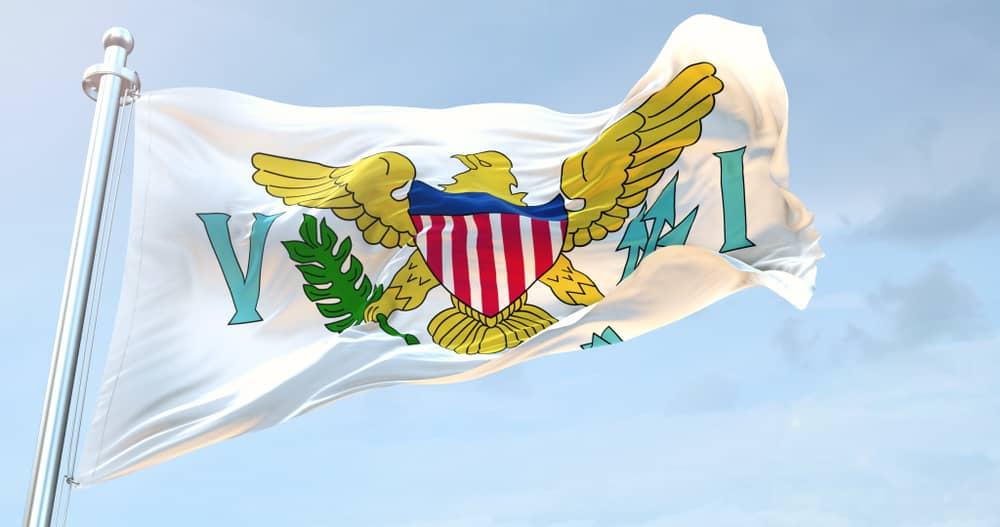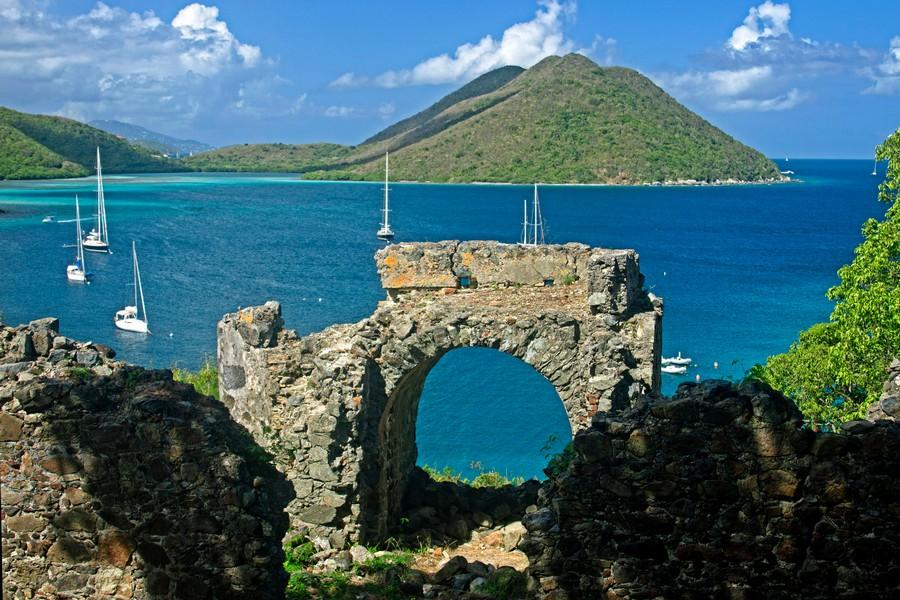The official language of the United States Virgin Islands is English. That’s the main language spoken on all of the islands, including St. John, St. Thomas, and St. Croix.
After English, the next most common language is Spanish due to the influx of immigrants and tourists from Spanish-speaking areas like Puerto Rico and Dominican Republic.
You will also often hear English Creole, a common English dialect spoken throughout the island. Compared to normal English, it’s spoken with a strong accent, pronounces certain things differently, and includes some not-so-common words.

History of the Languages
At first, it seems normal that the main language is English considering the language of the United States is English. Taking a closer look, however, we must remember that until 1917, the United States Virgin Islands had been a Danish colony for almost 250 years. Why, then, isn’t the language of the Virgin Islands Danish?
In fact, Danish was never an important language in the Danish West Indies. Denmark was a latecomer to the European practice of colonization. Lacking the military power of the other European colonizers, the Danes were only able to claim St. Thomas and later St. John because no other European power really wanted these dry, rocky, and hilly islands, which were not particularly suited to sugar production.
Early explorers and settlers sent back tales of extreme hardship and rampant disease. The Danes, who were generally comfortable at home, showed little interest in settling the new territories. Even an attempt to bring prisoners, promising freedom after six years of labor, was met with riots, mutinies, and other forms of resistance.
As a result, the Danish government and its representative in the colonies, the Danish West India Company, resorted to inviting foreigners to settle the islands. The majority of these settlers were Dutch.

The African slaves working on the plantations were taught to speak a Dutch Creole, called Creolsk, and this became the common language of St. Thomas and St. John. The Moravian Church, which was influential because it ministered to the slaves, even translated the Bible into Dutch Creole so that the slaves would be able to understand it.
The question then becomes, “Why isn’t Dutch spoken in the Virgin Islands?”
The Danes purchased St. Croix from France in 1733. The most influential foreigners in St. Croix were English. In St. Croix, English Creole was the dominant language and was spoken by most of the slaves.
St. Croix had large areas of flat and fertile land. It received more rainfall than its neighbors to the north and was more suitable for a plantation economy. St. Croix’s greater wealth and importance enabled it to exert a strong influence over the other islands of the Danish West Indies, St. Thomas, and St. John.
English Creole-The Spoken Word on St. John Presented by Mr. Elroy Sprauve
British Occupation – In the early 1800s, the Danish West Indies were occupied at two different times by the English. Once in 1801, for almost a year, and again from December 1807 until April 15, 1815. The purpose of the occupation was to secure the harbor at Charlotte Amalie and to prevent the use of the islands by the enemies of England.
During this time, more than 1,500 English troops were stationed on St. Thomas and St. John, further exposing the general population to British culture and the English language.
Publications – Newspapers, government proclamations, and official documents began to be written in English. As a result, the use of English and English Creole became more and more widespread, not only in St. Croix but also in St. Thomas and St. John.
Education – In 1839, the Danes passed a law requiring slave children to attend school. It was decided that the classes would be taught in English. This greatly accelerated the already established trend toward the common use of English in the Danish colonies.
The Dutch Creole still spoken in St. Thomas and St. John was gradually phased out and is no longer spoken in these islands. The last speaker of Dutch Creole on St. John died in 1991, and with her passing, the language is no longer spoken on the island.
In the book, The West Indies and the Spanish Main, Anthony Trollope made the following observation concerning the island of St. Thomas in 1859:
The people that one meets there form as strange a collection as may perhaps be found anywhere. In the first place, all languages seem alike to them. One hears English, French, German, and Spanish spoken all around one.
And apparently, it is indifferent which. The waiters seem to speak them all. Charles E. Taylor, in a description of St. John in the late nineteenth century, wrote:
“Dutch Creole was once the prevailing language, many of the planters being of Dutch descent. The population, which now numbers about 900, speak English.”
Driving on the Left – British cultural influence on the Virgin Islands answers yet another question commonly asked by visitors which is: “Why do Virgin Islanders drive on the left side of the road?”
Danish Language in Africa – The Danes were never successful in promoting the use of their language in their West Indian colonies. However, they did have a great effect on their sphere of influence in Africa. Danish forts were established in the Accra area of the African coast in order to receive and process slaves bound for the Danish colonies.
The Danes taught the Africans with whom they came in contact to speak Danish. This language is still spoken by many of the inhabitants of what is now the modern nation of Ghana, and a significant amount of prominent citizens of Ghana have Danish names and relatives in Denmark.
